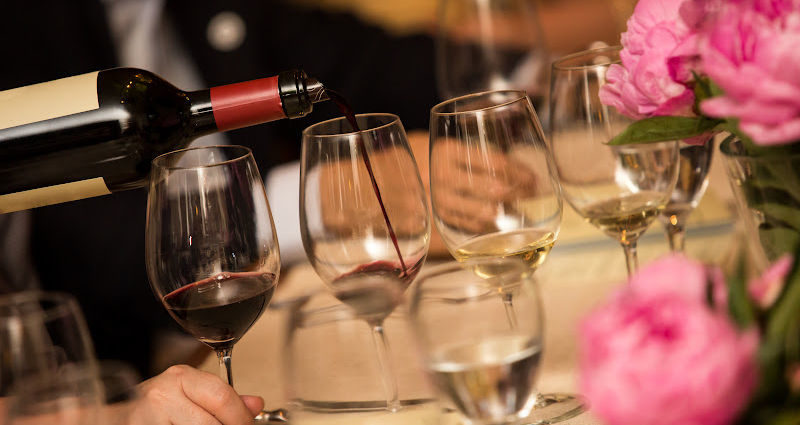How to order wine like a pro at the restaurant

For many of us, ordering wine in a restaurant can be intimidating, especially with a wine server or sommelier standing over you. What if you order the wrong bottle? What if you are overcharged?
You’re not alone, believe me. The good news is that you don’t need to be an expert to order awesome wine that complements your meal. I’m going to share some tips I’ve learned over the years along with expert tips from experienced sommeliers.
After reading this article, you’ll be able to confidently order wine in a restaurant, and enjoy the process of exploring new wines each time.
Where to Start
Asking for recommendations
Don’t get discouraged with a big selection of fancy wines and just ask for a recommendation that goes well with the dish you’ve ordered.
Your server or sommelier may want to know what type of taste appeals to you most in wine in order to find a bottle of wine that will satisfy your preferences.
You don’t need to overthink it or try to describe your preference in terms of wine – simply describe it the same way that you would describe your favorite dish or dessert. Your server then introduces you to a few different options that closely match with your preference and explain about each one so you can choose one to taste it out.
This is a good time to ask your server or sommelier about why they think you will enjoy it, the qualities of the wine, and whether they have personally tried it and enjoyed it.
Describing the tastes you enjoy
As there are so many different wine types, there are countless ways to describe them. While the casual wine lovers use basic descriptors, wine experts and sommeliers often use a wider variety of glossary to describe the subtle differences in the wines they taste.
For beginner and casual wine drinkers, it becomes difficult to describe those subtle differences like a pro. But wines fall into groups easily so you can start with something more general. Would you like something rich and heavy, or something lighter? Maybe something with earthy tones or fruity? How about something fresh versus more mature?
If you’re an absolute beginner and not sure what kind of taste you like in wine, you can describe the tastes you don’t like in fruits or other drinks. You may not enjoy certain types of fruits or drinks because they are too sour, bitter, or too sweet for you.
Thinking about budget
Tell your server or sommelier of your budget for a bottle of wine when asking for their recommendation so they can find the bottle that meets all your preferences and requirements.
What to expect
1. Check the Labels
When the server comes over and shows you the bottle, they are just confirming that the bottle they’re holding is the bottle you ordered. They will always show you the bottle before opening it. Mistakes happen more often than you may think, especially when a restaurant offers many varieties from the same manufacturer with almost identical bottles. So this is where you should carefully check that you have the correct bottle. If everything looks correct, give them a nod to open and pour it for your table.
2. Inspecting the cork
Now your wine server is ready to open the bottle in front of you, and remove the cork. Your server will place the cork on a tiny dish or napkin, or directly on the table.
Many people miss this step, but the cork provides you a hint of what’s going on inside the bottle. Mark Fang, a certified sommelier with over 10 years of wine industry experience and a creator of WineO Mark shared important tips about ordering wine with advanced mixology.
Mark advises to check if the end of the cork that was inside of the bottle touching the wine is slightly wet. While it doesn’t mean the wine is bad, it’s a red flag if the cork is completely wet or completely dry and crumbly.
3. tasting the wine
While it may seem a little intimidating at first to sample the wine while the server or sommelier is standing next to you waiting for your green light, this is an important step. Bon appetit says, “If you are ordering a bottle, make sure to really try the wine when the server pours you a little bit to test.”
The purpose of tasting and approving the sample is to evaluate whether the wine has any flaws.
- As a small amount of wine pours into your glass, gently swirl the wine to release its aroma.
- Then, smell the wine. A scent of damp cardboard or vinegar is an indication of a bad wine.
- If not, try a sip of the wine. You’ll know you got a poor quality bottle of wine if it tastes vinegary or just bad.
When to reject
Bad wine is bad wine, and you will know something is off when you smell or taste it. No wine should smell like old newspapers, damped carboard, or vinegar.
If you’ve observed any warning signs, don’t be afraid to acknowledge them and simply tell the server or sommelier what you think of the wine. They will smell and taste it themselves to make sure they’re not serving bad wines to their customers.
Remember! It is always better to be honest about whether or not you like the wine than to pretend everything is ok.
Time to enjoy
Once you’ve confirmed that the wine is sound to drink, it’s time relax and enjoy!
Some servers walk around the tables and refill as soon as they see empty wine glasses, while others take longer time. In any case, enjoy the wine at your own pace. You can reach for the bottle and refill your glass yourself whenever you need to.








